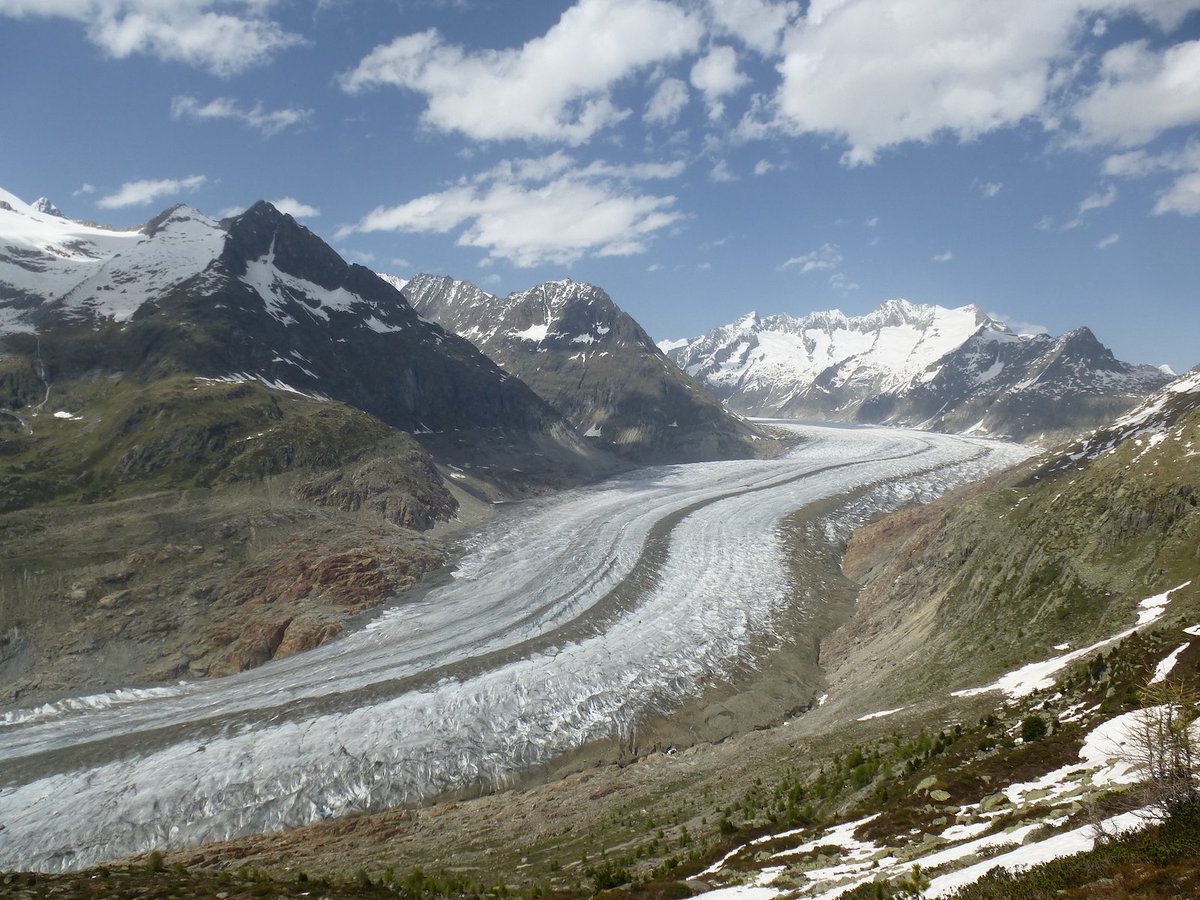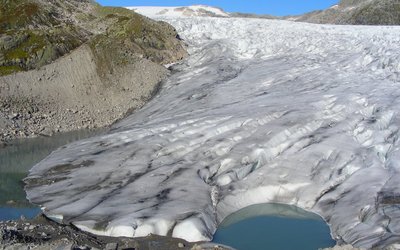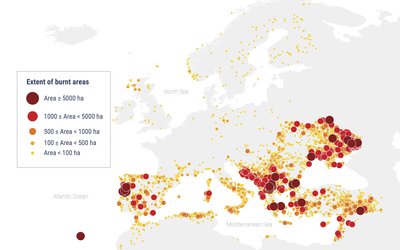
Photo: The Aletsch Glacier in the Swiss Alps (source: Luigi Selmi, www.flickr.com)
There are more than 215,000 glaciers on our planet. Most of them – about 80% – have an area of less than 1 km2. Roughly half of all glaciers are projected to be lost by 2100, even if temperature increase is limited to +1.5°C. Glacier mass losses increase rapidly as global temperature increases beyond +1.5°C – and global warming is headed toward +2.7°C. This was concluded from an evaluation of the sensitivity of glaciers to global warming by 2100 relative to preindustrial levels.
Glacier mass loss
The authors of this study predict that glaciers will lose about a quarter to more than 40% of their mass by 2100, globally, relative to 2015, under a low- and high-end scenario of climate change, respectively. Scandinavia and Central Europe are among the world regions that are projected to lose 60% to 100% of their glacier mass depending on the level of global warming. They will experience near-complete deglaciation at +3°C global warming. Elsewhere, the glaciers that remain will continue losing mass beyond 2100.
Sea level rise
Total glacier mass loss would contribute about 9 to 10 cm (± about 3 cm) to mean sea level rise by 2100 under +1.5 to +2°C global warming. Under +3°C to +4°C global warming, the contribution of glacier mass loss to sea level rise would be about 13 to 15 cm (± about 4 cm). The glaciers that are projected to disappear contribute only a small part to sea level rise – 2% to 8%, depending on the temperature change scenario – because they are generally very small.
From 2000 to 2019, glacier melt has contributed about 0.7 cm to sea level rise, equivalent to over 20% of the total sea level rise over this period.
Number of vanishing glaciers
Even if we succeed in meeting the Paris Agreement target of limiting global warming to +1.5°C, 104,000 (± 20,000) glaciers – nearly half of all globally inventoried glaciers – will disappear by 2100. At least half of those will be lost before 2050. Most of them are smaller than 1 km2.
Impacts
The melting of the glaciers not only impacts sea level rise and tourism. Glaciers are also a critical water resource for about 1.9 billion people, globally, and the disappearance of glaciers will affect water availability to many. Besides, part of the meltwater of the glaciers accumulates in lakes behind walls of debris and when these walls break, glacier outburst floods may cause many casualties and a lot of damage.
Source: Rounce et al. (2023). Science 379: 78–83.








